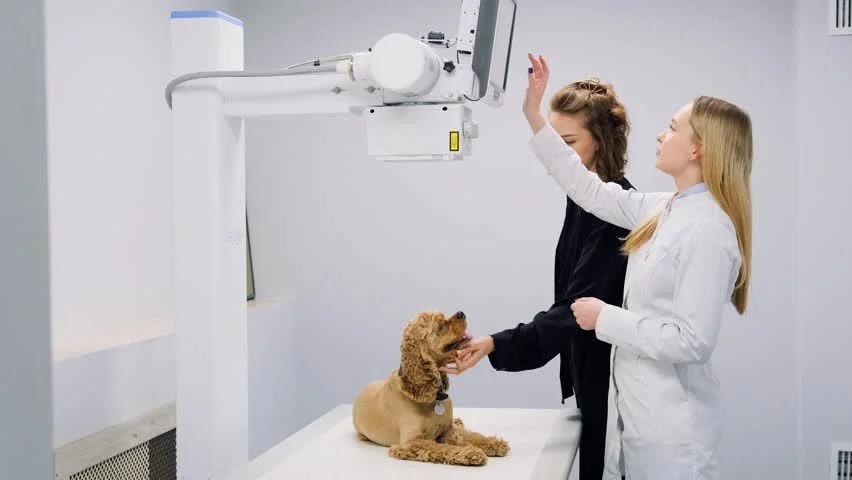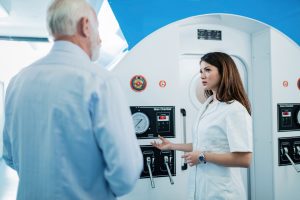Modern veterinary clinics rely heavily on advanced imaging equipment to provide accurate diagnoses and timely treatments. One of the most essential tools in any animal healthcare facility is the veterinary X-ray machine. Like any precision instrument, it requires proper upkeep to function optimally and to extend its service life.
In this blog, we’ll walk through some practical veterinary X-ray machine maintenance tips, discuss the benefits of regular servicing, and explore how preventive care can save your clinic time and money in the long run.
Why Maintenance Matters for Veterinary Imaging Equipment
Veterinary imaging equipment, including X-ray systems, is subject to frequent use in high-pressure clinical environments. Over time, this wear can impact performance, reduce image quality, and lead to expensive breakdowns.
Routine veterinary X-ray equipment care not only ensures better diagnostic accuracy but also improves patient safety and maintains compliance with industry standards. Regular maintenance also protects your investment, allowing the machine to deliver peak performance over its full lifecycle.
1. Daily and Weekly Maintenance Best Practices
Daily maintenance is your first line of defense against long-term damage. At the end of each day:
- Clean exterior surfaces with a soft, non-abrasive cloth and approved disinfectants. Avoid spraying directly on the machine.
- Inspect cables and connectors for signs of wear or fraying.
- Ensure the detector panel (for digital systems) is clean and free from debris or scratches.
On a weekly basis, go a step further:
- Check for software updates or system alerts that may indicate deeper issues.
- Review system calibration and image quality to catch inconsistencies early.
- Clear dust and debris from cooling fans and air filters.
2. Monthly Veterinary X-ray Machine Maintenance Tasks
A more detailed inspection should be performed monthly:
- Test mechanical movements (like arms or tables) for smooth operation.
- Inspect for signs of overheating, especially in high-usage clinics.
- Review radiation output and image consistency. Variations can signal internal wear.
- Back up data and system logs to prevent data loss during emergencies or repairs.
These steps help detect issues before they turn into equipment failures.
3. Schedule Regular Professional Servicing
While in-house routines are essential, nothing replaces the value of certified technician inspections. Schedule professional servicing at least twice a year to:
- Perform deep calibration of the X-ray generator and detectors.
- Inspect and replace worn-out components.
- Run performance tests using phantom imaging tools.
- Ensure your machine meets radiation safety compliance and quality assurance standards.
Technicians also bring tools and expertise that uncover hidden issues not visible to the untrained eye.
4. Environmental Control and Proper Usage
Environmental factors play a large role in the health of your veterinary X-ray equipment:
- Maintain optimal room temperature and humidity to prevent electronic degradation.
- Avoid sudden power surges by installing a dedicated power line or surge protector.
- Ensure staff are trained in correct usage protocols to prevent accidental damage from improper positioning or overuse.
Proper handling significantly reduces wear on high-touch components like the collimator, X-ray tube, and digital panels.
5. Keep Detailed Maintenance Records
Document all maintenance activities, including:
- Dates of daily, weekly, and monthly checks.
- Technician visits and repair notes.
- Calibration certificates and software update logs.
This log can be critical during audits, warranty claims, or resale evaluations. It also ensures continuity in care if staff changes or your clinic expands.
6. Recognizing Warning Signs of Malfunction
Understanding early warning signs helps prevent sudden failures. Watch for:
- Flickering or distorted images
- Unusual noises from mechanical parts
- Burning smells or signs of overheating
- Software error messages or system slowdowns
Addressing these symptoms early can prevent costly downtime and further damage.
7. Digital Veterinary X-ray Machine Maintenance Tips
Digital X-ray systems are becoming the standard due to their speed and image clarity. However, they come with additional care requirements:
- Calibrate sensors regularly to maintain image accuracy.
- Handle detector panels with care, especially portable ones used in equine or mobile practices.
- Keep software licenses updated to avoid compatibility issues.
Digital systems also benefit from periodic cybersecurity checks to protect patient data.
8. Upgrading When Maintenance Isn’t Enough
Sometimes, no amount of maintenance can restore outdated or overused equipment. If you’re facing frequent breakdowns, diminishing image quality, or increased maintenance costs, it may be time to consider a replacement.
When choosing a new veterinary X-ray machine, look for models that are service-friendly and come with extended warranty support. Many modern systems also include built-in diagnostics that make maintenance easier and more efficient.
Conclusion
Routine veterinary X-ray machine maintenance is critical for ensuring reliable performance, accurate imaging, and patient safety. With a combination of daily care, professional inspections, and environmental management, veterinary clinics can extend the life of their imaging equipment and avoid unexpected costs.
By implementing a clear maintenance strategy and staying proactive, you’ll protect your investment and maintain the highest standards of veterinary care.
FAQs:
1. How often should a veterinary X-ray machine be professionally serviced?
A veterinary X-ray machine should be professionally serviced at least twice a year, though high-traffic clinics may benefit from quarterly checkups.
2. What are the signs that my X-ray machine needs maintenance?
Common signs include poor image quality, strange noises, overheating, and software alerts. Addressing these early helps prevent major breakdowns.
3. Can I perform maintenance on my veterinary X-ray machine myself?
Yes, you can handle daily and weekly care such as cleaning and inspecting cables. However, calibrations and internal diagnostics should be left to certified technicians.
4. How long does a veterinary X-ray machine typically last with regular maintenance?
With consistent care, most veterinary X-ray systems can last 10 to 15 years, depending on usage volume and model quality.
5. Are digital X-ray machines harder to maintain than traditional ones?
Digital machines require more specialized care, especially for sensor calibration and software updates, but they also offer built-in diagnostics that aid in ongoing maintenance.




